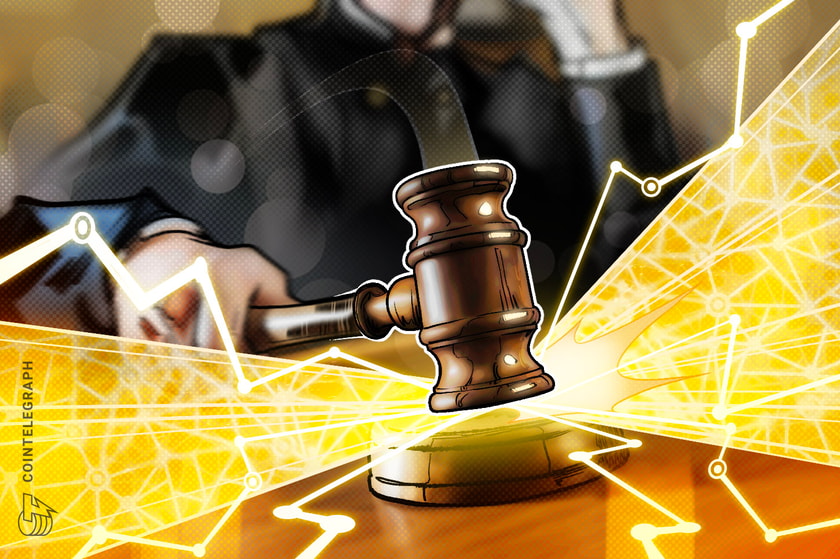Private, public and consortium blockchains: The differences explained
What is Bitcoin? How does blockchain work? How to mine cryptocurrency? We are glad to help you answer these questions with our quick guides in Explained section.
n”,”seo_description”:”What is Bitcoin? How does blockchain work? How to mine cryptocurrency? We are glad to help you answer these questions with our quick guides in Explained section.”},”words_count”:952,”description”:” There are three main types of blockchain technology: public, private and consortium blockchains, each of which has specific pros, cons and ideal usesrn “,”author”:{“id”:1415,”title”:”Jagjit Singh”,”url”:”jagjit-singh”,”twitter”:””,”google_plus”:””,”photo”:null,”gender”:”male”,”description”:”Jagjit is passionate about the blockchain and crypto space and has been closely following the trends in the crypto space. He’s himself a HODLer, which makes his voice authoritative and his writings an exciting piece of work.”,”facebook”:””,”email”:””,”linkedin”:””,”created_at”:”2021-11-03 12:47:28″,”updated_at”:”2021-11-03 12:47:28″,”deleted_at”:null,”avatar”:”https://cointelegraph.com/assets/img/icons/author_male.jpg”,”hash”:”aHR0cHM6Ly9jb2ludGVsZWdyYXBoLmNvbS9hdXRob3JzL2phZ2ppdC1zaW5naA==”,”relativeUrl”:”https://cointelegraph.com/authors/jagjit-singh”,”user_id”:1415,”language_id”:1,”name”:”Jagjit Singh”,”desc”:”Jagjit is passionate about the blockchain and crypto space and has been closely following the trends in the crypto space. He’s himself a HODLer, which makes his voice authoritative and his writings an exciting piece of work.”,”seo_title”:””,”seo_description”:””,”enabled”:0,”show_in_authors”:0,”show_in_experts”:0},”category_id”:65,”audio”:”https://s3.cointelegraph.com/audio/75447.1c471a51-caeb-4834-a0f6-ece1e4ef57a5.mp3″,”tags”:[{“name”:”Blockchain”,”uri”:”/tags/blockchain”,”super”:1,”page_title”:”Blockchain News”}],”tag_title”:”Blockchain”,”date”:”34 MINUTES AGO”,”badge”:{“title”:”Explained”,”label”:”default”},”qty”:17,”stats_pixel”:”“,”stats_pixel_url”:”https://zoa.cointelegraph.com/pixel?postId=75447®ionId=1″,”shares”:2,”infographic”:false,”sponsored”:false,”explained”:true,”press_release”:false,”show_referral”:false,”social_description”:” For those new to crypto, blockchain can somehow be all-encompassing in the industry without a clear definition of what it is. Educate yourself on the groundbreaking technology, from its different types to the pros and cons of each. “,”social_translators”:{“clipboard_popup_label”:”Link copied”,”socialWechatFooterError”:”WeChat error”,”socialWechatFooterText”:”WeChat share”,”socialWechatHeaderText”:”WeChat share”},”social_shares”:{“post_id”:75447,”post_url”:”https://cointelegraph.com/explained/private-public-and-consortium-blockchains-the-differences-explained”,”post_titles”:{“normal”:”Private, public and consortium blockchains: The differences explained”,”twitter”:”Private, public and consortium blockchains: The differences explained”},”post_text”:{“normal”:”Private, public and consortium blockchains: The differences explained”,”twitter”:”Private, public and consortium blockchains: The differences explained https://cointelegraph.com/explained/private-public-and-consortium-blockchains-the-differences-explained via @cointelegraph”},”accounts”:{“twitter”:”@cointelegraph”}},”socials”:{“facebook”:{“url”:”https://www.facebook.com/sharer/sharer.php?u=https%3A%2F%2Fcointelegraph.com%2Fexplained%2Fprivate-public-and-consortium-blockchains-the-differences-explained”,”count”:null,”short”:”fb”,”fa”:”facebook”},”twitter”:{“url”:”https://twitter.com/intent/tweet?text=Private%2C+public+and+consortium+blockchains%3A+The+differences+explained https%3A%2F%2Fcointelegraph.com%2Fexplained%2Fprivate-public-and-consortium-blockchains-the-differences-explained via @cointelegraph”,”count”:null,”short”:”tw”,”fa”:”twitter”},”telegram”:{“url”:”https://telegram.me/share/url?url=https%3A%2F%2Fcointelegraph.com%2Fexplained%2Fprivate-public-and-consortium-blockchains-the-differences-explained &text=Private%2C+public+and+consortium+blockchains%3A+The+differences+explained”,”count”:null,”short”:”tg”,”fa”:”paper-plane”},”whatsapp”:{“url”:”https://api.whatsapp.com/send?text=Private%2C+public+and+consortium+blockchains%3A+The+differences+explained&href=https%3A%2F%2Fcointelegraph.com%2Fexplained%2Fprivate-public-and-consortium-blockchains-the-differences-explained”,”count”:null,”short”:”wu”,”fa”:”whatsapp”},”gplus”:{“url”:”https://plus.google.com/share?url=https%3A%2F%2Fcointelegraph.com%2Fexplained%2Fprivate-public-and-consortium-blockchains-the-differences-explained”,”count”:null,”short”:”gplus”,”fa”:”google-plus”},”reddit”:{“url”:”https://www.reddit.com/submit?url=https%3A%2F%2Fcointelegraph.com%2Fexplained%2Fprivate-public-and-consortium-blockchains-the-differences-explained&title=Private%2C+public+and+consortium+blockchains%3A+The+differences+explained”,”count”:null,”short”:”reddit”,”fa”:”reddit-alien”},”linkedin”:{“url”:”https://www.linkedin.com/shareArticle?mini=true&url=https%3A%2F%2Fcointelegraph.com%2Fexplained%2Fprivate-public-and-consortium-blockchains-the-differences-explained&title=Private%2C+public+and+consortium+blockchains%3A+The+differences+explained”,”count”:null,”short”:”li”,”fa”:”linkedin”}},”hide_disclaimer”:false,”elink”:”https://cointelegraph.com”,”etitle”:”Cointelegraph”,”elogo_x2″:”https://images.cointelegraph.com/images/528_aHR0cHM6Ly9zMy5jb2ludGVsZWdyYXBoLmNvbS9zdG9yYWdlL3VwbG9hZHMvdmlldy9hYjAzYTJhMmNlOWEyMWRjMWYwOTYxZDkxNzMxYzhiYS5wbmc=.png”,”elogo_x1″:”https://images.cointelegraph.com/images/260_aHR0cHM6Ly9zMy5jb2ludGVsZWdyYXBoLmNvbS9zdG9yYWdlL3VwbG9hZHMvdmlldy9hYjAzYTJhMmNlOWEyMWRjMWYwOTYxZDkxNzMxYzhiYS5wbmc=.png”,”elogo_svg”:false,”content”:[{“id”:2884,”post_id”:75447,”title”:”What is a private blockchain?”,”content”:”
Private blockchains provide users with the absolute privacy they desire.
nn
Private blockchains (which are permissioned settings) establish rules governing who can see and write to the chain, in contrast to public, permissionless blockchains. There is a clear hierarchy of control in these systems; hence, they are not decentralized. However, they are dispersed because many nodes still keep a copy of the chain on their machines.
nn
A private blockchain network requires an invitation, which must be approved by the network founder or a set of rules established by the network starter. Businesses that create a private blockchain typically do it on a permissioned network. This limits who is authorized to engage in the network and for which specific transactions. Participants must first get an invitation or authorization.
nn
Existing participants could decide on prospective entrants; a regulatory authority could issue participation licenses, or a consortium could decide. Once a company joins the network, it will help to keep the blockchain running in a decentralized fashion.
nn
This type of permissioned blockchain paradigm allows users to take advantage of more than 30 years of technical literature to get considerable benefits.
nn
Private chains are better suited to enterprise settings when a company wants to benefit from blockchain qualities without exposing its network to the public. Digital identification, dealing with supply chain issues, disrupting the banking sector, or facilitating secure patient/provider data exchanges in healthcare are some of the use-cases of private blockchains. The Linux Foundation’s Hyperledger Fabric is an excellent example of a private blockchain.
nn
The contentious assertion that private blockchains aren’t actual blockchains, given that the underlying principle of blockchain is decentralization, is one of the disadvantages of private blockchains.
nn
Because centralized nodes determine what is valid, it is also more challenging to build information truthfully in a private blockchain. A minimal number of nodes can also imply a lower level of security. The consensus mechanism can be jeopardized if a few nodes go rogue.
nn
Furthermore, private blockchain source code is frequently proprietary and locked. Users are unable to independently verify or check it, which may result in a reduction in security. On a private blockchain, there is no anonymity.
nnnn”,”created_at”:”2021-11-03 13:12:43″,”updated_at”:”2021-11-03 13:22:39″,”sort”:1,”translations”:{“id”:2877,”explained_post_id”:2884,”title_en”:”What is a private blockchain?”,”content_en”:”
Private blockchains provide users with the absolute privacy they desire.
nn
Private blockchains (which are permissioned settings) establish rules governing who can see and write to the chain, in contrast to public, permissionless blockchains. There is a clear hierarchy of control in these systems; hence, they are not decentralized. However, they are dispersed because many nodes still keep a copy of the chain on their machines.
nn
A private blockchain network requires an invitation, which must be approved by the network founder or a set of rules established by the network starter. Businesses that create a private blockchain typically do it on a permissioned network. This limits who is authorized to engage in the network and for which specific transactions. Participants must first get an invitation or authorization.
nn
Existing participants could decide on prospective entrants; a regulatory authority could issue participation licenses, or a consortium could decide. Once a company joins the network, it will help to keep the blockchain running in a decentralized fashion.
nn
This type of permissioned blockchain paradigm allows users to take advantage of more than 30 years of technical literature to get considerable benefits.
nn
Private chains are better suited to enterprise settings when a company wants to benefit from blockchain qualities without exposing its network to the public. Digital identification, dealing with supply chain issues, disrupting the banking sector, or facilitating secure patient/provider data exchanges in healthcare are some of the use-cases of private blockchains. The Linux Foundation’s Hyperledger Fabric is an excellent example of a private blockchain.
nn
The contentious assertion that private blockchains aren’t actual blockchains, given that the underlying principle of blockchain is decentralization, is one of the disadvantages of private blockchains.
nn
Because centralized nodes determine what is valid, it is also more challenging to build information truthfully in a private blockchain. A minimal number of nodes can also imply a lower level of security. The consensus mechanism can be jeopardized if a few nodes go rogue.
nn
Furthermore, private blockchain source code is frequently proprietary and locked. Users are unable to independently verify or check it, which may result in a reduction in security. On a private blockchain, there is no anonymity.
nnnn”,”title_es”:””,”content_es”:”nn”,”title_cn”:””,”content_cn”:”nn”,”title_de”:””,”content_de”:”nn”,”title_it”:””,”content_it”:”nn”,”title_ar”:””,”content_ar”:”nn”,”title_br”:””,”content_br”:”nn”,”title_jp”:””,”content_jp”:”nn”,”created_at”:”2021-11-03 13:12:43″,”updated_at”:”2021-11-03 13:22:39″,”title_kr”:””,”content_kr”:”nn”,”title_tr”:””,”content_tr”:”nn”}},{“id”:2885,”post_id”:75447,”title”:”What is a public blockchain?”,”content”:”
Anyone can participate and be rewarded for their contribution to attaining consensus in a public blockchain.
nn
Anyone can join and participate in a public blockchain network because it is entirely open. To attract more people to join the network, the network usually has an incentive system. Bitcoin is one of the most widely used public blockchain networks today.
nn
One of the disadvantages of a public blockchain is the vast amount of processing power required to keep a distributed ledger running at a wide scale. To obtain consensus, each node in a network must solve a sophisticated, resource-intensive cryptographic challenge known as proof-of-work (PoW) to ensure everyone is on the same page.
nn
Another problem of a public blockchain is its openness, which implies minor to no transaction privacy and only supports a rudimentary idea of security.
nnnn”,”created_at”:”2021-11-03 13:13:30″,”updated_at”:”2021-11-03 13:22:39″,”sort”:2,”translations”:{“id”:2878,”explained_post_id”:2885,”title_en”:”What is a public blockchain?”,”content_en”:”
Anyone can participate and be rewarded for their contribution to attaining consensus in a public blockchain.
nn
Anyone can join and participate in a public blockchain network because it is entirely open. To attract more people to join the network, the network usually has an incentive system. Bitcoin is one of the most widely used public blockchain networks today.
nn
One of the disadvantages of a public blockchain is the vast amount of processing power required to keep a distributed ledger running at a wide scale. To obtain consensus, each node in a network must solve a sophisticated, resource-intensive cryptographic challenge known as proof-of-work (PoW) to ensure everyone is on the same page.
nn
Another problem of a public blockchain is its openness, which implies minor to no transaction privacy and only supports a rudimentary idea of security.
nnnn”,”title_es”:””,”content_es”:”nn”,”title_cn”:””,”content_cn”:”nn”,”title_de”:””,”content_de”:”nn”,”title_it”:””,”content_it”:”nn”,”title_ar”:””,”content_ar”:”nn”,”title_br”:””,”content_br”:”nn”,”title_jp”:””,”content_jp”:”nn”,”created_at”:”2021-11-03 13:13:30″,”updated_at”:”2021-11-03 13:22:39″,”title_kr”:””,”content_kr”:”nn”,”title_tr”:””,”content_tr”:”nn”}},{“id”:2886,”post_id”:75447,”title”:”What is the difference between private vs public blockchain?”,”content”:”
In every asset trade scenario, a blockchain was created to take out the intermediary securely. To some extent, a private blockchain allows the middleman to re-enter the picture.
nn
Anyone can participate in a public blockchain by verifying and uploading data to it. Only approved entities can participate in and control the network in private blockchains. Public blockchain examples include Bitcoin and Ethereum. A public blockchain is more decentralized than a private or centralized blockchain. Private blockchain examples include Hyperledger and Ripple.
nn
When contrasted with private blockchains, public blockchains have fewer transactions per second. A private blockchain may handle hundreds or even thousands of transactions per second because the number of authorized users is more diminutive.
nn
Because of its decentralization and active engagement, a public network is more secure. It is practically impossible for “bad actors” to assault the system and obtain control of the consensus network due to the increased number of nodes in the network. A private blockchain is more vulnerable to hacks, hazards and data breaches/manipulation than a public blockchain. It is simple for bad actors to put the entire network at risk.
nn
Because it requires a large number of electrical resources to run and reach network consensus, a public blockchain consumes more energy than a private blockchain. Private blockchains use a lot less energy and electricity than public blockchains.
nn
Minor collisions are impossible in a private blockchain. Each validator is identified and has the necessary credentials to join the network. However, no one knows who each validator is in a public blockchain, which increases the possibility of collusion or a 51% attack.
nnnn”,”created_at”:”2021-11-03 13:14:03″,”updated_at”:”2021-11-03 13:22:38″,”sort”:3,”translations”:{“id”:2879,”explained_post_id”:2886,”title_en”:”What is the difference between private vs public blockchain?”,”content_en”:”
In every asset trade scenario, a blockchain was created to take out the intermediary securely. To some extent, a private blockchain allows the middleman to re-enter the picture.
nn
Anyone can participate in a public blockchain by verifying and uploading data to it. Only approved entities can participate in and control the network in private blockchains. Public blockchain examples include Bitcoin and Ethereum. A public blockchain is more decentralized than a private or centralized blockchain. Private blockchain examples include Hyperledger and Ripple.
nn
When contrasted with private blockchains, public blockchains have fewer transactions per second. A private blockchain may handle hundreds or even thousands of transactions per second because the number of authorized users is more diminutive.
nn
Because of its decentralization and active engagement, a public network is more secure. It is practically impossible for “bad actors” to assault the system and obtain control of the consensus network due to the increased number of nodes in the network. A private blockchain is more vulnerable to hacks, hazards and data breaches/manipulation than a public blockchain. It is simple for bad actors to put the entire network at risk.
nn
Because it requires a large number of electrical resources to run and reach network consensus, a public blockchain consumes more energy than a private blockchain. Private blockchains use a lot less energy and electricity than public blockchains.
nn
Minor collisions are impossible in a private blockchain. Each validator is identified and has the necessary credentials to join the network. However, no one knows who each validator is in a public blockchain, which increases the possibility of collusion or a 51% attack.
nnnn”,”title_es”:””,”content_es”:”nn”,”title_cn”:””,”content_cn”:”nn”,”title_de”:””,”content_de”:”nn”,”title_it”:””,”content_it”:”nn”,”title_ar”:””,”content_ar”:”nn”,”title_br”:””,”content_br”:”nn”,”title_jp”:””,”content_jp”:”nn”,”created_at”:”2021-11-03 13:14:03″,”updated_at”:”2021-11-03 13:22:38″,”title_kr”:””,”content_kr”:”nn”,”title_tr”:””,”content_tr”:”nn”}},{“id”:2887,”post_id”:75447,”title”:”What is a consortium blockchain?”,”content”:”
A consortium blockchain is a hybrid form of public and private blockchains.
nn
The consortium blockchain straddles the line between public and private chains, incorporating aspects of both. The most noticeable difference between the two systems may be found at the level of unanimity.
nn
Instead of an open system in which anybody can validate blocks or a closed system in which only a single party selects block producers, a consortium chain employs a small number of equally powerful parties as validators.
nn
A consortium blockchain would be most useful in a situation when several companies operate in the same industry and need a single platform to conduct transactions or transmit information. Consortium blockchains Quorum and Corda are two examples.
nn
Compared to a public blockchain network, a consortium blockchain is more secure, scalable and efficient. It also has access controls, just like private blockchain. However, a consortium blockchain is less transparent. It can still be hacked if a member node is compromised, and the blockchain’s own rules can make the network unusable.
nnnn”,”created_at”:”2021-11-03 13:14:31″,”updated_at”:”2021-11-03 13:22:38″,”sort”:4,”translations”:{“id”:2880,”explained_post_id”:2887,”title_en”:”What is a consortium blockchain?”,”content_en”:”
A consortium blockchain is a hybrid form of public and private blockchains.
nn
The consortium blockchain straddles the line between public and private chains, incorporating aspects of both. The most noticeable difference between the two systems may be found at the level of unanimity.
nn
Instead of an open system in which anybody can validate blocks or a closed system in which only a single party selects block producers, a consortium chain employs a small number of equally powerful parties as validators.
nn
A consortium blockchain would be most useful in a situation when several companies operate in the same industry and need a single platform to conduct transactions or transmit information. Consortium blockchains Quorum and Corda are two examples.
nn
Compared to a public blockchain network, a consortium blockchain is more secure, scalable and efficient. It also has access controls, just like private blockchain. However, a consortium blockchain is less transparent. It can still be hacked if a member node is compromised, and the blockchain’s own rules can make the network unusable.
nnnn”,”title_es”:””,”content_es”:”nn”,”title_cn”:””,”content_cn”:”nn”,”title_de”:””,”content_de”:”nn”,”title_it”:””,”content_it”:”nn”,”title_ar”:””,”content_ar”:”nn”,”title_br”:””,”content_br”:”nn”,”title_jp”:””,”content_jp”:”nn”,”created_at”:”2021-11-03 13:14:31″,”updated_at”:”2021-11-03 13:22:38″,”title_kr”:””,”content_kr”:”nn”,”title_tr”:””,”content_tr”:”nn”}},{“id”:2888,”post_id”:75447,”title”:”Is Bitcoin a public or a private blockchain?”,”content”:”
Bitcoin is a public blockchain that anybody can observe and use because it is built with open source computing codes.
nn
While private blockchains do not allow for anonymity, the Bitcoin blockchain does. Anyone, for example, can purchase and trade Bitcoin without revealing their name. It ensures that everyone is treated equally.
nn
Because of Bitcoin’s decentralized nature, all transactions can be monitored transparently via a personal node or blockchain explorers, which allow anybody to witness transactions as they happen in real-time.
nn
Each node maintains its copy of the chain, which is updated as new blocks are confirmed. This means that if you wanted to, you could follow Bitcoin wherever it went.
nnnn”,”created_at”:”2021-11-03 13:14:53″,”updated_at”:”2021-11-03 13:22:38″,”sort”:5,”translations”:{“id”:2881,”explained_post_id”:2888,”title_en”:”Is Bitcoin a public or a private blockchain?”,”content_en”:”
Bitcoin is a public blockchain that anybody can observe and use because it is built with open source computing codes.
nn
While private blockchains do not allow for anonymity, the Bitcoin blockchain does. Anyone, for example, can purchase and trade Bitcoin without revealing their name. It ensures that everyone is treated equally.
nn
Because of Bitcoin’s decentralized nature, all transactions can be monitored transparently via a personal node or blockchain explorers, which allow anybody to witness transactions as they happen in real-time.
nn
Each node maintains its copy of the chain, which is updated as new blocks are confirmed. This means that if you wanted to, you could follow Bitcoin wherever it went.
nnnn”,”title_es”:””,”content_es”:”nn”,”title_cn”:””,”content_cn”:”nn”,”title_de”:””,”content_de”:”nn”,”title_it”:””,”content_it”:”nn”,”title_ar”:””,”content_ar”:”nn”,”title_br”:””,”content_br”:”nn”,”title_jp”:””,”content_jp”:”nn”,”created_at”:”2021-11-03 13:14:53″,”updated_at”:”2021-11-03 13:22:38″,”title_kr”:””,”content_kr”:”nn”,”title_tr”:””,”content_tr”:”nn”}},{“id”:2889,”post_id”:75447,”title”:”How does a private blockchain work?”,”content”:”
A private blockchain is a sort of blockchain technology in which a single entity controls the network.
nn
The entire network is shared by the coalition of organizations in a private permissioned blockchain. The network operator can set up user and node permissions and roles, such as who can participate in the consensus process, who can read and write to the ledger and how blockchain nodes are distributed around the network.
nn
Steps involved in the working of a private blockchain network:
nn
- nt
- Users of the network and their rights are not equal and are determined by their role in the consortium.
- Different categories of data can only be accessed by users who have been granted authorization.
- The technique of access is determined by the network participants’ regulations.
nt
nt
n
nnnn”,”created_at”:”2021-11-03 13:15:20″,”updated_at”:”2021-11-03 13:22:38″,”sort”:6,”translations”:{“id”:2882,”explained_post_id”:2889,”title_en”:”How does a private blockchain work?”,”content_en”:”
A private blockchain is a sort of blockchain technology in which a single entity controls the network.
nn
The entire network is shared by the coalition of organizations in a private permissioned blockchain. The network operator can set up user and node permissions and roles, such as who can participate in the consensus process, who can read and write to the ledger and how blockchain nodes are distributed around the network.
nn
Steps involved in the working of a private blockchain network:
nn
- nt
- Users of the network and their rights are not equal and are determined by their role in the consortium.
- Different categories of data can only be accessed by users who have been granted authorization.
- The technique of access is determined by the network participants’ regulations.
nt
nt
n
nnnn”,”title_es”:””,”content_es”:”nn”,”title_cn”:””,”content_cn”:”nn”,”title_de”:””,”content_de”:”nn”,”title_it”:””,”content_it”:”nn”,”title_ar”:””,”content_ar”:”nn”,”title_br”:””,”content_br”:”nn”,”title_jp”:””,”content_jp”:”nn”,”created_at”:”2021-11-03 13:15:20″,”updated_at”:”2021-11-03 13:22:38″,”title_kr”:””,”content_kr”:”nn”,”title_tr”:””,”content_tr”:”nn”}},{“id”:2890,”post_id”:75447,”title”:”How does a public blockchain work?”,”content”:”
The public blockchain network is a blockchain network that anybody can join at any time.
nn
Anyone with internet connectivity can join a blockchain platform and become an authorized node, making public blockchains non-restrictive and permissionless.
nn
This user has access to current and historical records and the ability to perform mining operations, which are sophisticated calculations required to verify transactions and add them to the ledger.
nn
No valid record or transaction may be modified on the network, and because the source code is usually open-source, anybody can verify the transactions, uncover errors and offer fixes.
nn
To engage with the public blockchain, each participant creates an account and connects it to a node. Consider it a bank account for sending and receiving money. Wallets are software applications that store accounts.
nn
The decision to add a transaction to the chain on a public blockchain is decided by consensus. This means that the transaction must be accepted by the majority of “nodes” (or computers in the network). The people who own the machines in the network are rewarded for confirming transactions. “Proof-of-work (PoW)” is the term for this procedure.
nnnn”,”created_at”:”2021-11-03 13:15:45″,”updated_at”:”2021-11-03 13:22:38″,”sort”:7,”translations”:{“id”:2883,”explained_post_id”:2890,”title_en”:”How does a public blockchain work?”,”content_en”:”
The public blockchain network is a blockchain network that anybody can join at any time.
nn
Anyone with internet connectivity can join a blockchain platform and become an authorized node, making public blockchains non-restrictive and permissionless.
nn
This user has access to current and historical records and the ability to perform mining operations, which are sophisticated calculations required to verify transactions and add them to the ledger.
nn
No valid record or transaction may be modified on the network, and because the source code is usually open-source, anybody can verify the transactions, uncover errors and offer fixes.
nn
To engage with the public blockchain, each participant creates an account and connects it to a node. Consider it a bank account for sending and receiving money. Wallets are software applications that store accounts.
nn
The decision to add a transaction to the chain on a public blockchain is decided by consensus. This means that the transaction must be accepted by the majority of “nodes” (or computers in the network). The people who own the machines in the network are rewarded for confirming transactions. “Proof-of-work (PoW)” is the term for this procedure.
nnnn”,”title_es”:””,”content_es”:”nn”,”title_cn”:””,”content_cn”:”nn”,”title_de”:””,”content_de”:”nn”,”title_it”:””,”content_it”:”nn”,”title_ar”:””,”content_ar”:”nn”,”title_br”:””,”content_br”:”nn”,”title_jp”:””,”content_jp”:”nn”,”created_at”:”2021-11-03 13:15:45″,”updated_at”:”2021-11-03 13:22:38″,”title_kr”:””,”content_kr”:”nn”,”title_tr”:””,”content_tr”:”nn”}},{“id”:2891,”post_id”:75447,”title”:”How does a consortium blockchain work?”,”content”:”
The consortium blockchain network is a blockchain in which numerous organizations manage the platform.
nn
Instead of starting from scratch, newcomers might join a consortium and helpt to manage the developed structure and shared data. At the same time, by working together to solve shared challenges, businesses can save money and time on development.
nn
Finally, the coordination of actions and the sharing of expertise helps to avoid duplication by allowing diverse subjects to share duties rather than duplicate labor.
nn
In a consortium blockchain, there are fewer known participants. It ensures low latency and excellent performance because it is frequently a voting-based system. Every node can write and read transactions, but no one node may add a block. Every node (or supermajority) must confirm that block to do so. The block cannot be added if this rule is not met.
nnn”,”created_at”:”2021-11-03 13:16:14″,”updated_at”:”2021-11-03 13:22:38″,”sort”:8,”translations”:{“id”:2884,”explained_post_id”:2891,”title_en”:”How does a consortium blockchain work?”,”content_en”:”
The consortium blockchain network is a blockchain in which numerous organizations manage the platform.
nn
Instead of starting from scratch, newcomers might join a consortium and helpt to manage the developed structure and shared data. At the same time, by working together to solve shared challenges, businesses can save money and time on development.
nn
Finally, the coordination of actions and the sharing of expertise helps to avoid duplication by allowing diverse subjects to share duties rather than duplicate labor.
nn
In a consortium blockchain, there are fewer known participants. It ensures low latency and excellent performance because it is frequently a voting-based system. Every node can write and read transactions, but no one node may add a block. Every node (or supermajority) must confirm that block to do so. The block cannot be added if this rule is not met.
nnn”,”title_es”:””,”content_es”:”nn”,”title_cn”:””,”content_cn”:”nn”,”title_de”:””,”content_de”:”nn”,”title_it”:””,”content_it”:”nn”,”title_ar”:””,”content_ar”:”nn”,”title_br”:””,”content_br”:”nn”,”title_jp”:””,”content_jp”:”nn”,”created_at”:”2021-11-03 13:16:14″,”updated_at”:”2021-11-03 13:22:38″,”title_kr”:””,”content_kr”:”nn”,”title_tr”:””,”content_tr”:”nn”}}],”is_partner_material”:false,”commentsSection”:{“schemaEntityUrl”:”//cointelegraph.com/explained/private-public-and-consortium-blockchains-the-differences-explained”,”list”:[],”amount”:0,”i18n”:{“addComment”:”Add a comment…”,”amountOnePostfix”:”Comment”,”amountPostfix”:”Comments”,”cancel”:”Cancel”,”delete”:”Delete”,”edit”:”Edit”,”errorBig”:”Comment text cannot be longer than 2000 characters”,”errorDuplicate”:”Duplicate comment”,”errorSmall”:”Comment text must be at least 2 characters long”,”hideButton”:”Hide comments”,”noComments”:” “,”commentOnModeration”:”Comment on moderation”,”postComment”:”Post”,”reply”:”Reply”,”showAllComments”:”Show All Comments”,”showButtonPostfix”:”comments”,”showButtonPrefix”:”Show”,”signIn”:”Sign in”,”update”:”Update comment”,”commentWasDeleted”:”This comment has been deleted”}},”related”:[{“id”:46446,”retina”:”https://images.cointelegraph.com/images/1480_aHR0cHM6Ly9zMy5jb2ludGVsZWdyYXBoLmNvbS9zdG9yYWdlL3VwbG9hZHMvdmlldy85MDU3NGFhNDFiNDhhNjVmNWZlZDFkMmM1YjMwMzlmNi5qcGc=.jpg”,”img”:”https://images.cointelegraph.com/images/740_aHR0cHM6Ly9zMy5jb2ludGVsZWdyYXBoLmNvbS9zdG9yYWdlL3VwbG9hZHMvdmlldy85MDU3NGFhNDFiNDhhNjVmNWZlZDFkMmM1YjMwMzlmNi5qcGc=.jpg”,”thumb”:”https://images.cointelegraph.com/images/370_aHR0cHM6Ly9zMy5jb2ludGVsZWdyYXBoLmNvbS9zdG9yYWdlL3VwbG9hZHMvdmlldy85MDU3NGFhNDFiNDhhNjVmNWZlZDFkMmM1YjMwMzlmNi5qcGc=.jpg”,”thumb370″:”https://images.cointelegraph.com/images/370_aHR0cHM6Ly9zMy5jb2ludGVsZWdyYXBoLmNvbS9zdG9yYWdlL3VwbG9hZHMvdmlldy85MDU3NGFhNDFiNDhhNjVmNWZlZDFkMmM1YjMwMzlmNi5qcGc=.jpg”,”amp_thumb”:”https://images.cointelegraph.com/images/150_aHR0cHM6Ly9zMy5jb2ludGVsZWdyYXBoLmNvbS9zdG9yYWdlL3VwbG9hZHMvdmlldy85MDU3NGFhNDFiNDhhNjVmNWZlZDFkMmM1YjMwMzlmNi5qcGc=.jpg”,”thumb150″:”https://images.cointelegraph.com/images/150_aHR0cHM6Ly9zMy5jb2ludGVsZWdyYXBoLmNvbS9zdG9yYWdlL3VwbG9hZHMvdmlldy85MDU3NGFhNDFiNDhhNjVmNWZlZDFkMmM1YjMwMzlmNi5qcGc=.jpg”,”url”:”https://cointelegraph.com/news/ousting-the-greenback-usd-still-king-as-btc-and-cbdcs-mount-challenge”,”title”:”Ousting the Greenback: USD Still King as BTC and CBDCs Mount Challenge”,”lead”:”The advent of digital money will threaten the U.S. dollar’s global dominance, but it won’t be easy to dethrone the current global reserve currency.”,”leadfull”:””,”category_id”:19,”category_url”:”https://cointelegraph.com/category/analysis”,”category_title”:”Analysis”,”author_url”:”https://cointelegraph.com/authors/kirill-bryanov”,”author_hash”:”aHR0cHM6Ly9jb2ludGVsZWdyYXBoLmNvbS9hdXRob3JzL2tpcmlsbC1icnlhbm92″,”author_title”:”Kirill Bryanov”,”author_img”:”https://images.cointelegraph.com/images/32_aHR0cHM6Ly9zMy5jb2ludGVsZWdyYXBoLmNvbS9zdG9yYWdlL3VwbG9hZHMvdmlldy8yN2Y4NDEzYWE3YjcyZjIwMTE0MjJlOGE4OTIyYzU1Zi5qcGc=.jpg”,”date”:”JUN 04, 2020″,”flash_date”:”JUN 04, 2020″,”sponsored”:false,”press_release”:false,”sponsored_label”:”Sponsored”,”explained”:false,”badge”:{“title”:”Analysis”,”label”:”info”},”published”:{“date”:”2020-06-04 19:10:00.000000″,”timezone_type”:3,”timezone”:”Europe/London”},”stat_uniqs”:57456,”rss_date”:”Thu, 04 Jun 2020 19:10:00 +0100″,”publishedW3″:”2020-06-04T19:10:00+01:00″,”show_referral”:true,”isMagazine”:false},{“id”:75130,”retina”:”https://images.cointelegraph.com/images/1480_aHR0cHM6Ly9zMy5jb2ludGVsZWdyYXBoLmNvbS9zdG9yYWdlL3VwbG9hZHMvdmlldy9jY2JlMjU3MjZkMDUzMWJmNGUwOTFhOWEyMmVhNDZjYy5qcGc=.jpg”,”img”:”https://images.cointelegraph.com/images/740_aHR0cHM6Ly9zMy5jb2ludGVsZWdyYXBoLmNvbS9zdG9yYWdlL3VwbG9hZHMvdmlldy9jY2JlMjU3MjZkMDUzMWJmNGUwOTFhOWEyMmVhNDZjYy5qcGc=.jpg”,”thumb”:”https://images.cointelegraph.com/images/370_aHR0cHM6Ly9zMy5jb2ludGVsZWdyYXBoLmNvbS9zdG9yYWdlL3VwbG9hZHMvdmlldy9jY2JlMjU3MjZkMDUzMWJmNGUwOTFhOWEyMmVhNDZjYy5qcGc=.jpg”,”thumb370″:”https://images.cointelegraph.com/images/370_aHR0cHM6Ly9zMy5jb2ludGVsZWdyYXBoLmNvbS9zdG9yYWdlL3VwbG9hZHMvdmlldy9jY2JlMjU3MjZkMDUzMWJmNGUwOTFhOWEyMmVhNDZjYy5qcGc=.jpg”,”amp_thumb”:”https://images.cointelegraph.com/images/150_aHR0cHM6Ly9zMy5jb2ludGVsZWdyYXBoLmNvbS9zdG9yYWdlL3VwbG9hZHMvdmlldy9jY2JlMjU3MjZkMDUzMWJmNGUwOTFhOWEyMmVhNDZjYy5qcGc=.jpg”,”thumb150″:”https://images.cointelegraph.com/images/150_aHR0cHM6Ly9zMy5jb2ludGVsZWdyYXBoLmNvbS9zdG9yYWdlL3VwbG9hZHMvdmlldy9jY2JlMjU3MjZkMDUzMWJmNGUwOTFhOWEyMmVhNDZjYy5qcGc=.jpg”,”url”:”https://cointelegraph.com/news/how-to-take-full-advantage-of-the-benefits-of-defi-and-increase-high-interest-savings”,”title”:”How to take full advantage of the benefits of DeFi and increase high-interest savings”,”lead”:”Overcoming scalability and accessibility concerns with DeFi, may start with an improved user experience.”,”leadfull”:””,”category_id”:62,”category_url”:”https://cointelegraph.com/category/sponsored”,”category_title”:”Sponsored”,”author_url”:”https://cointelegraph.com/authors/sarah-jansen”,”author_hash”:”aHR0cHM6Ly9jb2ludGVsZWdyYXBoLmNvbS9hdXRob3JzL3NhcmFoLWphbnNlbg==”,”author_title”:”Sarah Jansen”,”author_img”:”https://images.cointelegraph.com/images/32_aHR0cHM6Ly9zMy5jb2ludGVsZWdyYXBoLmNvbS9zdG9yYWdlL3VwbG9hZHMvdmlldy84N2IwYjRjMzkyZjlhYmM4ZjlhZDNiZTU3Y2FjZGJmZC5qcGc=.jpg”,”date”:”NOV 01, 2021″,”flash_date”:”NOV 01, 2021″,”sponsored”:true,”press_release”:false,”sponsored_label”:”Sponsored”,”explained”:false,”badge”:{“title”:”Sponsored”,”label”:”default”},”published”:{“date”:”2021-11-01 13:00:00.000000″,”timezone_type”:3,”timezone”:”Europe/London”},”stat_uniqs”:7024,”rss_date”:”Mon, 01 Nov 2021 13:00:00 +0000″,”publishedW3″:”2021-11-01T13:00:00+00:00″,”show_referral”:true,”isMagazine”:false},{“id”:75264,”retina”:”https://images.cointelegraph.com/images/1480_aHR0cHM6Ly9zMy5jb2ludGVsZWdyYXBoLmNvbS91cGxvYWRzLzIwMjEtMTAvZDliNmE1ODktNGNiMC00ZjZiLWEzOTItZGUxNjY3NmNkYTY2LmpwZw==.jpg”,”img”:”https://images.cointelegraph.com/images/740_aHR0cHM6Ly9zMy5jb2ludGVsZWdyYXBoLmNvbS91cGxvYWRzLzIwMjEtMTAvZDliNmE1ODktNGNiMC00ZjZiLWEzOTItZGUxNjY3NmNkYTY2LmpwZw==.jpg”,”thumb”:”https://images.cointelegraph.com/images/370_aHR0cHM6Ly9zMy5jb2ludGVsZWdyYXBoLmNvbS91cGxvYWRzLzIwMjEtMTAvZDliNmE1ODktNGNiMC00ZjZiLWEzOTItZGUxNjY3NmNkYTY2LmpwZw==.jpg”,”thumb370″:”https://images.cointelegraph.com/images/370_aHR0cHM6Ly9zMy5jb2ludGVsZWdyYXBoLmNvbS91cGxvYWRzLzIwMjEtMTAvZDliNmE1ODktNGNiMC00ZjZiLWEzOTItZGUxNjY3NmNkYTY2LmpwZw==.jpg”,”amp_thumb”:”https://images.cointelegraph.com/images/150_aHR0cHM6Ly9zMy5jb2ludGVsZWdyYXBoLmNvbS91cGxvYWRzLzIwMjEtMTAvZDliNmE1ODktNGNiMC00ZjZiLWEzOTItZGUxNjY3NmNkYTY2LmpwZw==.jpg”,”thumb150″:”https://images.cointelegraph.com/images/150_aHR0cHM6Ly9zMy5jb2ludGVsZWdyYXBoLmNvbS91cGxvYWRzLzIwMjEtMTAvZDliNmE1ODktNGNiMC00ZjZiLWEzOTItZGUxNjY3NmNkYTY2LmpwZw==.jpg”,”url”:”https://cointelegraph.com/news/bitcoin-white-paper-turns-13-years-old-the-journey-so-far”,”title”:”Bitcoin white paper turns 13 years old: The journey so far”,”lead”:”The Bitcoin white paper only has nine pages, yet it contained enough to change the world. Here’s how it came to be 13 years ago.”,”leadfull”:””,”category_id”:19,”category_url”:”https://cointelegraph.com/category/analysis”,”category_title”:”Analysis”,”author_url”:”https://cointelegraph.com/authors/francisco-rodrigues”,”author_hash”:”aHR0cHM6Ly9jb2ludGVsZWdyYXBoLmNvbS9hdXRob3JzL2ZyYW5jaXNjby1yb2RyaWd1ZXM=”,”author_title”:”Francisco Rodrigues”,”author_img”:”https://cointelegraph.com/assets/img/icons/author_male.jpg”,”date”:”OCT 31, 2021″,”flash_date”:”OCT 31, 2021″,”sponsored”:false,”press_release”:false,”sponsored_label”:”Sponsored”,”explained”:false,”badge”:{“title”:”Analysis”,”label”:”info”},”published”:{“date”:”2021-10-31 14:13:00.000000″,”timezone_type”:3,”timezone”:”Europe/London”},”stat_uniqs”:5879,”rss_date”:”Sun, 31 Oct 2021 14:13:00 +0000″,”publishedW3″:”2021-10-31T14:13:00+00:00″,”show_referral”:true,”isMagazine”:false},{“id”:75385,”retina”:”https://images.cointelegraph.com/images/1480_aHR0cHM6Ly9zMy5jb2ludGVsZWdyYXBoLmNvbS91cGxvYWRzLzIwMjEtMTAvMmQ4NTA4ZTgtZDYyMy00MTkwLTg1MzQtZDJmYWVjMjgwNmZmLmpwZw==.jpg”,”img”:”https://images.cointelegraph.com/images/740_aHR0cHM6Ly9zMy5jb2ludGVsZWdyYXBoLmNvbS91cGxvYWRzLzIwMjEtMTAvMmQ4NTA4ZTgtZDYyMy00MTkwLTg1MzQtZDJmYWVjMjgwNmZmLmpwZw==.jpg”,”thumb”:”https://images.cointelegraph.com/images/370_aHR0cHM6Ly9zMy5jb2ludGVsZWdyYXBoLmNvbS91cGxvYWRzLzIwMjEtMTAvMmQ4NTA4ZTgtZDYyMy00MTkwLTg1MzQtZDJmYWVjMjgwNmZmLmpwZw==.jpg”,”thumb370″:”https://images.cointelegraph.com/images/370_aHR0cHM6Ly9zMy5jb2ludGVsZWdyYXBoLmNvbS91cGxvYWRzLzIwMjEtMTAvMmQ4NTA4ZTgtZDYyMy00MTkwLTg1MzQtZDJmYWVjMjgwNmZmLmpwZw==.jpg”,”amp_thumb”:”https://images.cointelegraph.com/images/150_aHR0cHM6Ly9zMy5jb2ludGVsZWdyYXBoLmNvbS91cGxvYWRzLzIwMjEtMTAvMmQ4NTA4ZTgtZDYyMy00MTkwLTg1MzQtZDJmYWVjMjgwNmZmLmpwZw==.jpg”,”thumb150″:”https://images.cointelegraph.com/images/150_aHR0cHM6Ly9zMy5jb2ludGVsZWdyYXBoLmNvbS91cGxvYWRzLzIwMjEtMTAvMmQ4NTA4ZTgtZDYyMy00MTkwLTg1MzQtZDJmYWVjMjgwNmZmLmpwZw==.jpg”,”url”:”https://cointelegraph.com/news/is-bitcoin-season-real-or-a-maximalist-theory”,”title”:”Is ‘Bitcoin season’ real or a maximalist theory?”,”lead”:”There is enough historical data to back up the notion that “Bitcoin seasons” really do exist. “,”leadfull”:””,”category_id”:19,”category_url”:”https://cointelegraph.com/category/analysis”,”category_title”:”Analysis”,”author_url”:”https://cointelegraph.com/authors/shiraz-jagati”,”author_hash”:”aHR0cHM6Ly9jb2ludGVsZWdyYXBoLmNvbS9hdXRob3JzL3NoaXJhei1qYWdhdGk=”,”author_title”:”Shiraz Jagati”,”author_img”:”https://images.cointelegraph.com/images/32_aHR0cHM6Ly9zMy5jb2ludGVsZWdyYXBoLmNvbS9zdG9yYWdlL3VwbG9hZHMvdmlldy80NWFkZTVhZDI3NmQyOGMwNjZhMjA2NGE1MTc1ZDNhMy5qcGc=.jpg”,”date”:”NOV 02, 2021″,”flash_date”:”NOV 02, 2021″,”sponsored”:false,”press_release”:false,”sponsored_label”:”Sponsored”,”explained”:false,”badge”:{“title”:”Analysis”,”label”:”info”},”published”:{“date”:”2021-11-02 13:40:50.000000″,”timezone_type”:3,”timezone”:”Europe/London”},”stat_uniqs”:6511,”rss_date”:”Tue, 02 Nov 2021 13:40:50 +0000″,”publishedW3″:”2021-11-02T13:40:50+00:00″,”show_referral”:true,”isMagazine”:false},{“id”:75426,”retina”:”https://images.cointelegraph.com/images/1480_aHR0cHM6Ly9zMy5jb2ludGVsZWdyYXBoLmNvbS91cGxvYWRzLzIwMjEtMTEvYTU0YmQ2YTYtOTg4OC00ZmVjLTk2Y2EtOGUxN2U0NjRhNjU1LmpwZWc=.jpeg”,”img”:”https://images.cointelegraph.com/images/740_aHR0cHM6Ly9zMy5jb2ludGVsZWdyYXBoLmNvbS91cGxvYWRzLzIwMjEtMTEvYTU0YmQ2YTYtOTg4OC00ZmVjLTk2Y2EtOGUxN2U0NjRhNjU1LmpwZWc=.jpeg”,”thumb”:”https://images.cointelegraph.com/images/370_aHR0cHM6Ly9zMy5jb2ludGVsZWdyYXBoLmNvbS91cGxvYWRzLzIwMjEtMTEvYTU0YmQ2YTYtOTg4OC00ZmVjLTk2Y2EtOGUxN2U0NjRhNjU1LmpwZWc=.jpeg”,”thumb370″:”https://images.cointelegraph.com/images/370_aHR0cHM6Ly9zMy5jb2ludGVsZWdyYXBoLmNvbS91cGxvYWRzLzIwMjEtMTEvYTU0YmQ2YTYtOTg4OC00ZmVjLTk2Y2EtOGUxN2U0NjRhNjU1LmpwZWc=.jpeg”,”amp_thumb”:”https://images.cointelegraph.com/images/150_aHR0cHM6Ly9zMy5jb2ludGVsZWdyYXBoLmNvbS91cGxvYWRzLzIwMjEtMTEvYTU0YmQ2YTYtOTg4OC00ZmVjLTk2Y2EtOGUxN2U0NjRhNjU1LmpwZWc=.jpeg”,”thumb150″:”https://images.cointelegraph.com/images/150_aHR0cHM6Ly9zMy5jb2ludGVsZWdyYXBoLmNvbS91cGxvYWRzLzIwMjEtMTEvYTU0YmQ2YTYtOTg4OC00ZmVjLTk2Y2EtOGUxN2U0NjRhNjU1LmpwZWc=.jpeg”,”url”:”https://cointelegraph.com/news/connecticut-jury-finds-crypto-related-products-are-not-securities”,”title”:”Connecticut jury finds crypto-related products are not securities”,”lead”:”Once again, the question of whether digital assets constitute securities is under question. “,”leadfull”:””,”category_id”:2,”category_url”:”https://cointelegraph.com/category/latest-news”,”category_title”:”Latest News”,”author_url”:”https://cointelegraph.com/authors/keira-wright”,”author_hash”:”aHR0cHM6Ly9jb2ludGVsZWdyYXBoLmNvbS9hdXRob3JzL2tlaXJhLXdyaWdodA==”,”author_title”:”Keira Wright”,”author_img”:”https://cointelegraph.com/assets/img/icons/author_female.png”,”date”:”6 HOURS AGO”,”flash_date”:”NOV 03, 2021″,”sponsored”:false,”press_release”:false,”sponsored_label”:”Sponsored”,”explained”:false,”badge”:{“title”:”News”,”label”:”default”},”published”:{“date”:”2021-11-03 08:35:28.000000″,”timezone_type”:3,”timezone”:”Europe/London”},”stat_uniqs”:2294,”rss_date”:”Wed, 03 Nov 2021 08:35:28 +0000″,”publishedW3″:”2021-11-03T08:35:28+00:00″,”show_referral”:true,”isMagazine”:false},{“id”:75427,”retina”:”https://images.cointelegraph.com/images/1480_aHR0cHM6Ly9zMy5jb2ludGVsZWdyYXBoLmNvbS91cGxvYWRzLzIwMjEtMTEvYjU5OTIxNWEtOTk0MC00YWNjLThiOTctOTBkOTY1YTczMjJiLmpwZw==.jpg”,”img”:”https://images.cointelegraph.com/images/740_aHR0cHM6Ly9zMy5jb2ludGVsZWdyYXBoLmNvbS91cGxvYWRzLzIwMjEtMTEvYjU5OTIxNWEtOTk0MC00YWNjLThiOTctOTBkOTY1YTczMjJiLmpwZw==.jpg”,”thumb”:”https://images.cointelegraph.com/images/370_aHR0cHM6Ly9zMy5jb2ludGVsZWdyYXBoLmNvbS91cGxvYWRzLzIwMjEtMTEvYjU5OTIxNWEtOTk0MC00YWNjLThiOTctOTBkOTY1YTczMjJiLmpwZw==.jpg”,”thumb370″:”https://images.cointelegraph.com/images/370_aHR0cHM6Ly9zMy5jb2ludGVsZWdyYXBoLmNvbS91cGxvYWRzLzIwMjEtMTEvYjU5OTIxNWEtOTk0MC00YWNjLThiOTctOTBkOTY1YTczMjJiLmpwZw==.jpg”,”amp_thumb”:”https://images.cointelegraph.com/images/150_aHR0cHM6Ly9zMy5jb2ludGVsZWdyYXBoLmNvbS91cGxvYWRzLzIwMjEtMTEvYjU5OTIxNWEtOTk0MC00YWNjLThiOTctOTBkOTY1YTczMjJiLmpwZw==.jpg”,”thumb150″:”https://images.cointelegraph.com/images/150_aHR0cHM6Ly9zMy5jb2ludGVsZWdyYXBoLmNvbS91cGxvYWRzLzIwMjEtMTEvYjU5OTIxNWEtOTk0MC00YWNjLThiOTctOTBkOTY1YTczMjJiLmpwZw==.jpg”,”url”:”https://cointelegraph.com/news/blockchain-forensics-firm-chainalysis-opens-australian-office”,”title”:”Blockchain forensics firm Chainalysis opens Australian office”,”lead”:”Chainalysis aims to aid crypto and blockchain’s already impressive growth in Southern Asia and Oceania.”,”leadfull”:””,”category_id”:2,”category_url”:”https://cointelegraph.com/category/latest-news”,”category_title”:”Latest News”,”author_url”:”https://cointelegraph.com/authors/keira-wright”,”author_hash”:”aHR0cHM6Ly9jb2ludGVsZWdyYXBoLmNvbS9hdXRob3JzL2tlaXJhLXdyaWdodA==”,”author_title”:”Keira Wright”,”author_img”:”https://cointelegraph.com/assets/img/icons/author_female.png”,”date”:”5 HOURS AGO”,”flash_date”:”NOV 03, 2021″,”sponsored”:false,”press_release”:false,”sponsored_label”:”Sponsored”,”explained”:false,”badge”:{“title”:”News”,”label”:”default”},”published”:{“date”:”2021-11-03 08:47:35.000000″,”timezone_type”:3,”timezone”:”Europe/London”},”stat_uniqs”:1993,”rss_date”:”Wed, 03 Nov 2021 08:47:35 +0000″,”publishedW3″:”2021-11-03T08:47:35+00:00″,”show_referral”:true,”isMagazine”:false}]}” :shares=”{“facebook”:{“url”:”https://www.facebook.com/sharer/sharer.php?u=%URL%”,”icon”:”facebook”,”title”:”Facebook”,”sizesAllowed”:[{“size”:”lg”,”label”:”Large devices”,”breakpoint”:”> 1200px”},{“size”:”md”,”label”:”Medium devices”,”breakpoint”:”> 992px”},{“size”:”sm”,”label”:”Small tablets”,”breakpoint”:”> 768px”},{“size”:”xs”,”label”:”Smartphones”,”breakpoint”:”> 480px”},{“size”:”xxs”,”label”:”Extra small devices”,”breakpoint”:”< 480px"}],"position":1,"status":true},"twitter":{"url":"https://twitter.com/intent/tweet?text=%TEXT%","icon":"twitter","title":"Twitter","position":2,"status":true,"sizesAllowed":[{"size":"xxs","label":"Extra small devices","breakpoint":"< 480px"},{"size":"xs","label":"Smartphones","breakpoint":"> 480px”},{“size”:”sm”,”label”:”Small tablets”,”breakpoint”:”> 768px”},{“size”:”md”,”label”:”Medium devices”,”breakpoint”:”> 992px”},{“size”:”lg”,”label”:”Large devices”,”breakpoint”:”> 1200px”}]},”telegram”:{“url”:”https://t.me/share/url?url=%URL%&text=%TEXT%”,”icon”:”telegram”,”title”:”Telegram”,”position”:3,”status”:true,”sizesAllowed”:[{“size”:”xxs”,”label”:”Extra small devices”,”breakpoint”:”< 480px"},{"size":"xs","label":"Smartphones","breakpoint":"> 480px”},{“size”:”sm”,”label”:”Small tablets”,”breakpoint”:”> 768px”},{“size”:”md”,”label”:”Medium devices”,”breakpoint”:”> 992px”},{“size”:”lg”,”label”:”Large devices”,”breakpoint”:”> 1200px”}]},”linkedin”:{“url”:”https://www.linkedin.com/shareArticle?mini=true&url=%URL%&title=%TITLE%”,”icon”:”linked-in”,”title”:”LinkedIn”,”position”:5,”status”:true,”sizesAllowed”:[{“size”:”xxs”,”label”:”Extra small devices”,”breakpoint”:”< 480px"},{"size":"xs","label":"Smartphones","breakpoint":"> 480px”},{“size”:”sm”,”label”:”Small tablets”,”breakpoint”:”> 768px”},{“size”:”md”,”label”:”Medium devices”,”breakpoint”:”> 992px”},{“size”:”lg”,”label”:”Large devices”,”breakpoint”:”> 1200px”}]},”copy”:{“url”:”%URL%”,”icon”:”copy”,”position”:7,”title”:”Copy Link”,”sizesAllowed”:[{“size”:”xxs”,”label”:”Extra small devices”,”breakpoint”:”< 480px"},{"size":"xs","label":"Smartphones","breakpoint":"> 480px”},{“size”:”sm”,”label”:”Small tablets”,”breakpoint”:”> 768px”},{“size”:”md”,”label”:”Medium devices”,”breakpoint”:”> 992px”},{“size”:”lg”,”label”:”Large devices”,”breakpoint”:”> 1200px”}],”status”:true},”whatsapp”:{“url”:”https://wa.me/?text=%TITLE% %URL%”,”icon”:”whats-app”,”title”:”Whatsapp”,”sizesAllowed”:[{“size”:”xxs”,”label”:”Extra small devices”,”breakpoint”:”< 480px"},{"size":"xs","label":"Smartphones","breakpoint":"> 480px”},{“size”:”sm”,”label”:”Small tablets”,”breakpoint”:”> 768px”},{“size”:”md”,”label”:”Medium devices”,”breakpoint”:”> 992px”},{“size”:”lg”,”label”:”Large devices”,”breakpoint”:”> 1200px”}],”position”:6,”status”:true},”reddit”:{“url”:”https://www.reddit.com/submit?url=%URL%&title=%TITLE%”,”icon”:”reddit”,”title”:”Reddit”,”sizesAllowed”:[{“size”:”xxs”,”label”:”Extra small devices”,”breakpoint”:”< 480px"},{"size":"xs","label":"Smartphones","breakpoint":"> 480px”},{“size”:”sm”,”label”:”Small tablets”,”breakpoint”:”> 768px”},{“size”:”md”,”label”:”Medium devices”,”breakpoint”:”> 992px”},{“size”:”lg”,”label”:”Large devices”,”breakpoint”:”> 1200px”}],”position”:4,”status”:true}}” is=”ExplainedPostPage”>
Private blockchains provide users with the absolute privacy they desire.
Private blockchains (which are permissioned settings) establish rules governing who can see and write to the chain, in contrast to public, permissionless blockchains. There is a clear hierarchy of control in these systems; hence, they are not decentralized. However, they are dispersed because many nodes still keep a copy of the chain on their machines.
A private blockchain network requires an invitation, which must be approved by the network founder or a set of rules established by the network starter. Businesses that create a private blockchain typically do it on a permissioned network. This limits who is authorized to engage in the network and for which specific transactions. Participants must first get an invitation or authorization.
Existing participants could decide on prospective entrants; a regulatory authority could issue participation licenses, or a consortium could decide. Once a company joins the network, it will help to keep the blockchain running in a decentralized fashion.
This type of permissioned blockchain paradigm allows users to take advantage of more than 30 years of technical literature to get considerable benefits.
Private chains are better suited to enterprise settings when a company wants to benefit from blockchain qualities without exposing its network to the public. Digital identification, dealing with supply chain issues, disrupting the banking sector, or facilitating secure patient/provider data exchanges in healthcare are some of the use-cases of private blockchains. The Linux Foundation’s Hyperledger Fabric is an excellent example of a private blockchain.
The contentious assertion that private blockchains aren’t actual blockchains, given that the underlying principle of blockchain is decentralization, is one of the disadvantages of private blockchains.
Because centralized nodes determine what is valid, it is also more challenging to build information truthfully in a private blockchain. A minimal number of nodes can also imply a lower level of security. The consensus mechanism can be jeopardized if a few nodes go rogue.
Furthermore, private blockchain source code is frequently proprietary and locked. Users are unable to independently verify or check it, which may result in a reduction in security. On a private blockchain, there is no anonymity.
Anyone can participate and be rewarded for their contribution to attaining consensus in a public blockchain.
Anyone can join and participate in a public blockchain network because it is entirely open. To attract more people to join the network, the network usually has an incentive system. Bitcoin is one of the most widely used public blockchain networks today.
One of the disadvantages of a public blockchain is the vast amount of processing power required to keep a distributed ledger running at a wide scale. To obtain consensus, each node in a network must solve a sophisticated, resource-intensive cryptographic challenge known as proof-of-work (PoW) to ensure everyone is on the same page.
Another problem of a public blockchain is its openness, which implies minor to no transaction privacy and only supports a rudimentary idea of security.
In every asset trade scenario, a blockchain was created to take out the intermediary securely. To some extent, a private blockchain allows the middleman to re-enter the picture.
Anyone can participate in a public blockchain by verifying and uploading data to it. Only approved entities can participate in and control the network in private blockchains. Public blockchain examples include Bitcoin and Ethereum. A public blockchain is more decentralized than a private or centralized blockchain. Private blockchain examples include Hyperledger and Ripple.
When contrasted with private blockchains, public blockchains have fewer transactions per second. A private blockchain may handle hundreds or even thousands of transactions per second because the number of authorized users is more diminutive.
Because of its decentralization and active engagement, a public network is more secure. It is practically impossible for “bad actors” to assault the system and obtain control of the consensus network due to the increased number of nodes in the network. A private blockchain is more vulnerable to hacks, hazards and data breaches/manipulation than a public blockchain. It is simple for bad actors to put the entire network at risk.
Because it requires a large number of electrical resources to run and reach network consensus, a public blockchain consumes more energy than a private blockchain. Private blockchains use a lot less energy and electricity than public blockchains.
Minor collisions are impossible in a private blockchain. Each validator is identified and has the necessary credentials to join the network. However, no one knows who each validator is in a public blockchain, which increases the possibility of collusion or a 51% attack.
A consortium blockchain is a hybrid form of public and private blockchains.
The consortium blockchain straddles the line between public and private chains, incorporating aspects of both. The most noticeable difference between the two systems may be found at the level of unanimity.
Instead of an open system in which anybody can validate blocks or a closed system in which only a single party selects block producers, a consortium chain employs a small number of equally powerful parties as validators.
A consortium blockchain would be most useful in a situation when several companies operate in the same industry and need a single platform to conduct transactions or transmit information. Consortium blockchains Quorum and Corda are two examples.
Compared to a public blockchain network, a consortium blockchain is more secure, scalable and efficient. It also has access controls, just like private blockchain. However, a consortium blockchain is less transparent. It can still be hacked if a member node is compromised, and the blockchain’s own rules can make the network unusable.
Bitcoin is a public blockchain that anybody can observe and use because it is built with open source computing codes.
While private blockchains do not allow for anonymity, the Bitcoin blockchain does. Anyone, for example, can purchase and trade Bitcoin without revealing their name. It ensures that everyone is treated equally.
Because of Bitcoin’s decentralized nature, all transactions can be monitored transparently via a personal node or blockchain explorers, which allow anybody to witness transactions as they happen in real-time.
Each node maintains its copy of the chain, which is updated as new blocks are confirmed. This means that if you wanted to, you could follow Bitcoin wherever it went.
A private blockchain is a sort of blockchain technology in which a single entity controls the network.
The entire network is shared by the coalition of organizations in a private permissioned blockchain. The network operator can set up user and node permissions and roles, such as who can participate in the consensus process, who can read and write to the ledger and how blockchain nodes are distributed around the network.
Steps involved in the working of a private blockchain network:
- Users of the network and their rights are not equal and are determined by their role in the consortium.
- Different categories of data can only be accessed by users who have been granted authorization.
- The technique of access is determined by the network participants’ regulations.
The public blockchain network is a blockchain network that anybody can join at any time.
Anyone with internet connectivity can join a blockchain platform and become an authorized node, making public blockchains non-restrictive and permissionless.
This user has access to current and historical records and the ability to perform mining operations, which are sophisticated calculations required to verify transactions and add them to the ledger.
No valid record or transaction may be modified on the network, and because the source code is usually open-source, anybody can verify the transactions, uncover errors and offer fixes.
To engage with the public blockchain, each participant creates an account and connects it to a node. Consider it a bank account for sending and receiving money. Wallets are software applications that store accounts.
The decision to add a transaction to the chain on a public blockchain is decided by consensus. This means that the transaction must be accepted by the majority of “nodes” (or computers in the network). The people who own the machines in the network are rewarded for confirming transactions. “Proof-of-work (PoW)” is the term for this procedure.
The consortium blockchain network is a blockchain in which numerous organizations manage the platform.
Instead of starting from scratch, newcomers might join a consortium and helpt to manage the developed structure and shared data. At the same time, by working together to solve shared challenges, businesses can save money and time on development.
Finally, the coordination of actions and the sharing of expertise helps to avoid duplication by allowing diverse subjects to share duties rather than duplicate labor.
In a consortium blockchain, there are fewer known participants. It ensures low latency and excellent performance because it is frequently a voting-based system. Every node can write and read transactions, but no one node may add a block. Every node (or supermajority) must confirm that block to do so. The block cannot be added if this rule is not met.









